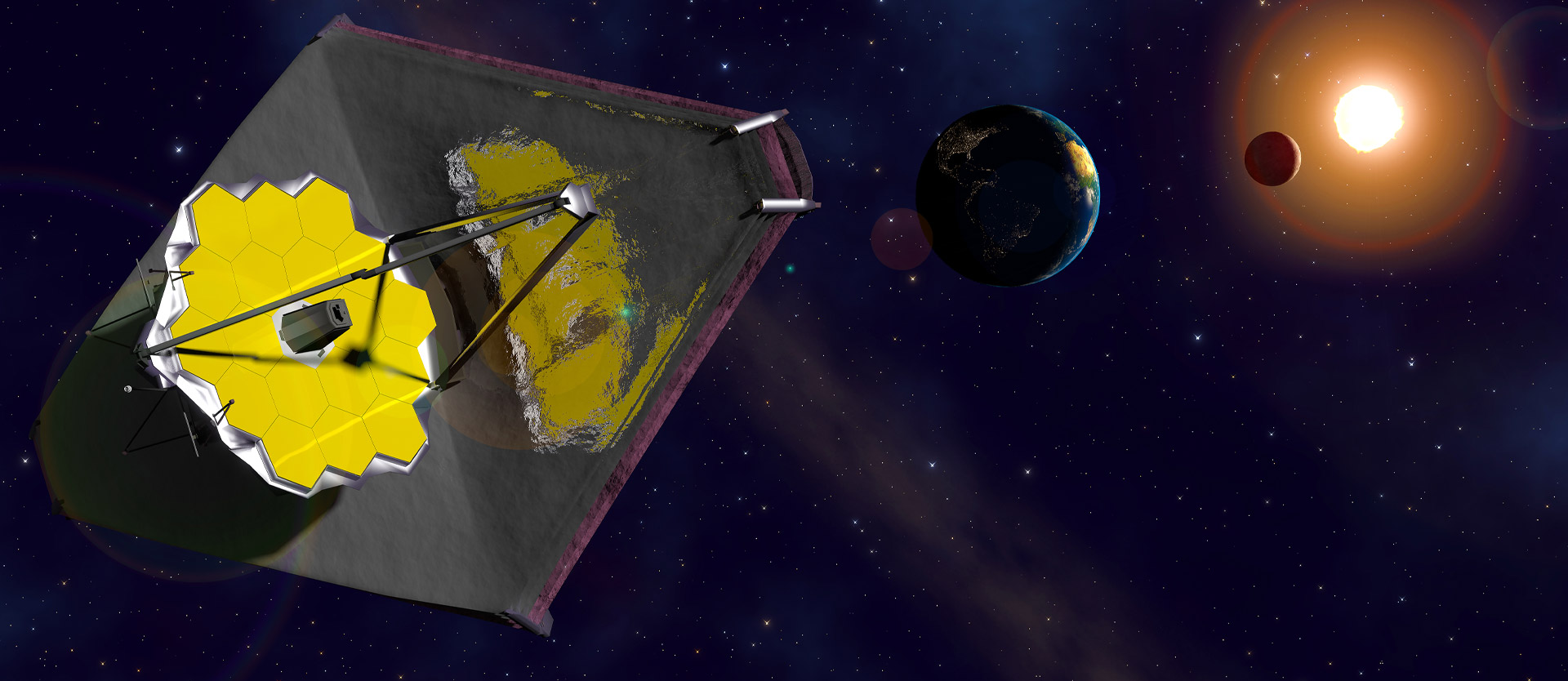
"Mail" from space
The multi-layered sun shield, which is about the size of a tennis court, has also been successfully deployed. It ensures that the sensitive instruments, which operate at temperatures well below -200 °C, are not disturbed by the sun's thermal radiation, which heats the side of the shield facing it to about 80°C.
Indeed, the James Webb telescope specializes precisely in measuring infrared radiation, or thermal radiation. It is designed to take pictures of the first luminous objects in the universe and give us new insights into the formation of galaxies, stars, black holes and planets. However, because the universe has continued to expand since that time, all light is redshifted. This means that even visible light at that time now has wavelengths that can only be observed with infrared telescopes. The James Webb telescope can look about 13.5 billion years into the past because of its unprecedented sensitivity.
When one receives a letter, the message has already been written and sent a few days ago. One receives therefore information which corresponds to a state from the past. It is the same with the light from the early time of the universe. It was sent out billions of years ago, but because of the long travel time it arrives today only with us.
In addition, the JWST will be able to study exoplanets and determine the composition of their atmospheres through infrared spectroscopy. Perhaps in this way it will contribute to finding traces of extraterrestrial life, or at least planets on which life may arise.
But even after reaching its observation post, the telescope still has a few months to go before the first images reach us. For example, all the instruments will have to cool down to operating temperature and the mirrors and instruments will have to be adjusted and calibrated. Around the beginning of summer, the JWST will begin to probe the depths of space. And maybe one day my sons will develop the same passion through these images of the James Webb Telescope that Hubble once awakened in me.












